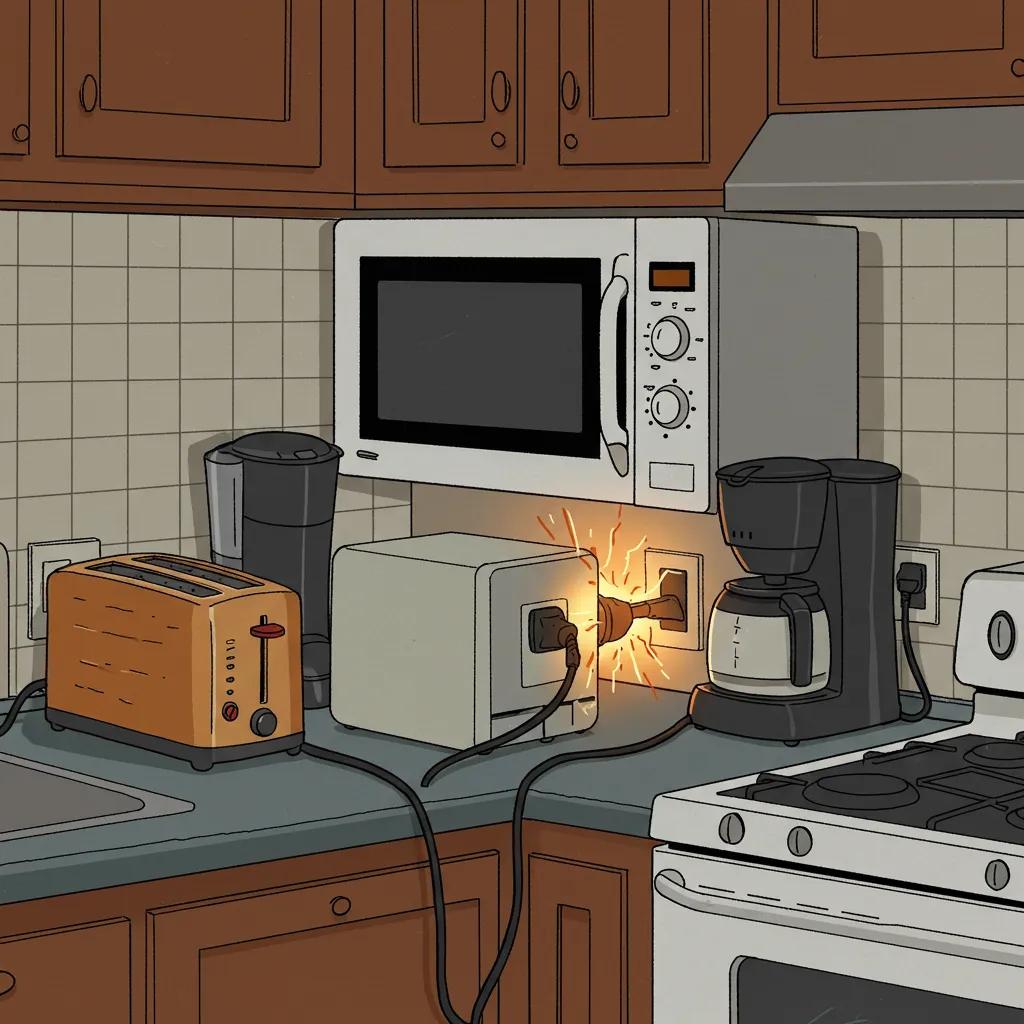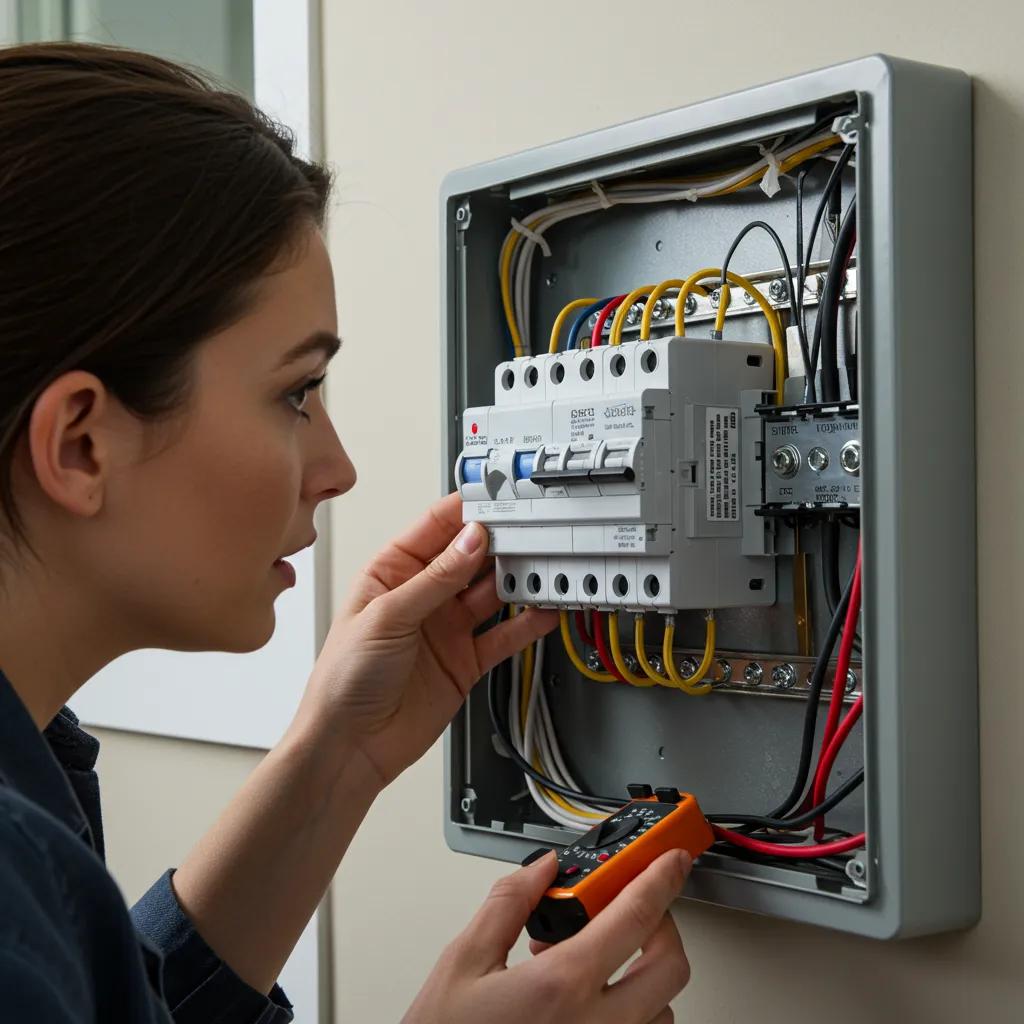Why Your Breaker Keeps Tripping in Lexington KY: Causes, Troubleshooting, and When to Call an Electrician
Circuit breakers are safety devices that interrupt electrical flow when a circuit experiences excessive current, a short, or a ground fault, preventing fire and equipment damage. This article explains why a breaker keeps tripping in Lexington KY, offering concise causes, safe troubleshooting steps, and clear signals for when to hire a licensed electrician. You will learn how overloaded circuits, short circuits, ground faults, aging wiring, and faulty appliances present themselves, plus immediate actions you can take to reduce risk and restore power safely. The guide also maps practical reset procedures, decision checks to identify underlying causes, and recommended preventative measures such as inspections and panel upgrades. Finally, we cover how reliable electrical services support local businesses and briefly note complementary fleet wrap branding options for businesses seeking better visibility. Throughout, keywords like “breaker keeps tripping Lexington KY”, “circuit breaker troubleshooting”, and “how to reset a tripped breaker” are integrated to make this a practical local resource.
What Are the Common Causes of a Circuit Breaker Tripping in Lexington KY?
A circuit breaker trips when the electrical load exceeds a breaker’s rating, when a short creates a sudden surge, or when current flows to ground via a ground fault, each mechanism designed to protect wiring and occupants. Understanding these mechanisms helps you spot patterns—repeated trips during high appliance use often point to overloads, while sparks or scorch marks suggest shorts that require immediate attention. In Lexington’s older housing stock, aging wiring and obsolete panels are common contributors, and damaged outlets or malfunctioning appliances can create intermittent trips. The table below summarizes the main causes, their typical signs, and common examples to help you match symptoms at home to likely faults.
Common causes include overloads, short circuits, ground faults, faulty wiring, and bad appliances:
- Overloaded circuit: Too many high-draw devices on one circuit, often during AC or dryer operation.
- Short circuit: Hot conductor touches neutral or ground, producing sparks and immediate trips.
- Ground fault: Current leaks to ground, common in wet areas with damaged insulation.
This grouping clarifies immediate checks you can perform before deeper troubleshooting.
This table connects symptoms to likely causes so homeowners can prioritize safe actions and communicate clearly with a technician.
How Does an Overloaded Circuit Cause Breaker Trips?

An overloaded circuit trips when devices draw more current than the breaker and wiring were designed to carry, causing the breaker’s thermal element to heat and open the circuit. This typically occurs during simultaneous use of high-demand appliances like air conditioners, space heaters, and electric ovens, and it often presents as gradual or predictable trips when specific equipment runs. To mitigate overloads, spread heavy appliances across different circuits, avoid extension cords for high-draw devices, and stagger usage during peak periods. If trips persist despite load management, consider professional load testing or a panel upgrade to increase capacity.
What Is a Short Circuit and Why Does It Trip Your Breaker?
A short circuit happens when a hot conductor contacts a neutral or ground conductor, creating a low-resistance path that produces a sudden current spike and immediate breaker trip to prevent fire. Visual signs include sparks, a loud pop, burning odors, or blackened outlet faces; these signs indicate a hazardous condition requiring immediate cessation of use and likely professional repair. Avoid attempting internal wiring repairs yourself; instead, isolate the circuit and call a licensed electrician if you detect sparks or scorch marks. Timely professional diagnosis prevents escalation to fire or major equipment loss.
How Do Ground Faults Affect Your Circuit Breaker?
Ground faults occur when current takes an unintended path to ground, often through water or a person, and GFCI devices or breakers trip rapidly to reduce shock risk. GFCI-protected outlets in bathrooms, kitchens, garages, and outdoor locations detect imbalances and cut power within milliseconds, and a tripped GFCI often indicates moisture ingress or damaged insulation. Homeowners should test GFCIs monthly using the built-in test/reset buttons and inspect outdoor and bathroom outlets for wear. If GFCIs continue to trip after removing obvious moisture sources, consult a licensed electrician for safe diagnosis.
Can Faulty Wiring or Old Electrical Panels Cause Breaker Trips?
Aging wiring and obsolete panels can cause chronic trips due to weakened insulation, corroded connections, or inadequate capacity for modern loads, and older Lexington homes may be especially susceptible. Signs include frequent unexplained trips, warm breaker boxes, flickering lights, or outlets that feel hot to the touch, indicating degraded components or overloaded circuits. When multiple circuits trip or you observe physical panel deterioration, a professional inspection and possible electrical panel upgrade should be scheduled. Upgrading to a modern panel improves safety, capacity, and compatibility with current appliances.
How Do Damaged Appliances or Outlets Lead to Breaker Problems?
Appliances with internal faults or damaged cords can leak current or draw excess current intermittently, causing trips that follow appliance operation, while worn outlets may short or arc under load. To isolate a suspect appliance, unplug devices and test them on a different known-good circuit; if the fault follows the appliance, repair or replacement is needed. Damaged outlets showing discoloration, loose fit, or sparks should be de-energized and assessed by a professional. Promptly addressing faulty devices prevents repeated trips and reduces fire risk.
How Can You Safely Troubleshoot and Reset a Tripping Breaker in Lexington KY?
Safe troubleshooting and reset start with a clear definition of the problem, simple cause-elimination steps, and adherence to safety protocols to avoid shocks or fires. Before attempting a reset, identify whether the trip was likely due to overload, short, or ground fault by checking recent appliance use, visible outlet damage, or moisture exposure. The numbered reset steps below provide a safe sequence for homeowners to follow, and they are designed to minimize risk while revealing if a deeper underlying problem exists. If uncertainty remains after these checks, stop and arrange a professional diagnostic.
Follow these safe reset steps to minimize risk and test the circuit:
- Turn off and unplug all devices on the affected circuit to eliminate immediate loads.
- Visual safety check: look for scorch marks, burning smells, or frayed wires before touching the panel.
- Fully switch the breaker to OFF, then to ON—avoid “half-reset” positions where a breaker can sit between states.
- Plug devices back one at a time to identify if a specific appliance causes a repeat trip.
After following these steps, observe the circuit for at least several minutes; if the breaker trips again immediately or you notice burning smells or heat, stop and call a licensed electrician.
What Are the Step-by-Step Procedures to Reset a Tripped Breaker Safely?
Resetting a tripped breaker safely involves powering down connected devices, confirming no visible hazards, and performing a full off-then-on reset to verify stability. Start by switching off or unplugging all loads on the circuit to prevent an immediate overload upon reset, then confirm no smell or heat is present at outlets and the panel. With hands dry and standing on dry flooring, move the breaker fully to OFF, then decisively to ON; a half-position can leave the circuit unpredictable. If the breaker trips again immediately, record conditions and stop further resets pending electrician evaluation.
How Can You Identify the Underlying Cause Before Resetting?
Quick identification uses a simple decision path: review recent appliance use, check outlets for damage, and note any moisture exposure or burning odors that indicate a short or ground fault. Unplug high-draw appliances and test by resetting the breaker; if stability returns, an overloaded appliance or shared-load issue is likely. If the breaker trips with nothing plugged in or you detect scorch marks or smell, treat the issue as a wiring fault and avoid repeated resets. Documenting patterns—time of day, appliances operating, and symptoms—helps a technician diagnose faster.
When Is DIY Troubleshooting Appropriate and When Should You Stop?
DIY troubleshooting is appropriate for basic checks like unplugging devices, resetting breakers, testing GFCIs, and inspecting for visible outlet damage; these are low-risk and informative steps. Stop and call a licensed electrician immediately if you encounter sparks, persistent repeated trips, burning smells, warm panel surfaces, exposed wiring, or any shock incidents, since these are red flags for hazardous conditions. Avoid opening panels or attempting wire repairs unless you are qualified and the power is safely isolated. Prioritizing safety reduces injury and prevents escalation to major damage.
When Should You Call a Licensed Electrician in Lexington KY for Breaker Issues?

Call a licensed electrician whenever breaker behavior suggests hazardous conditions, when you’re unable to identify the cause, or when repairs require wiring or panel work beyond basic homeowner steps. Professional electricians offer licensed diagnostics, code-compliant repairs, and safe execution of tasks like panel upgrades, circuit tracing, and replacement of damaged breakers or GFCIs. If trips are persistent, occur with no loads, or are accompanied by smells, sparks, or shocks, immediate professional assessment is warranted to reduce fire and liability risk. Below is a concise list of warning signs indicating you should stop DIY action and secure a licensed pro.
When to call a licensed electrician — urgent signs to act on:
- Smoke, burning smell, or visible sparks: possible active fire risk.
- Repeated or unexplained trips: indicates systemic wiring or panel faults.
- Warm or discolored outlets and panels: corrosion or loose connections.
Engaging a licensed electrician ensures repairs meet local code requirements and that safety-critical tasks are handled with appropriate tools and testing.
What Are the Warning Signs That Require Professional Help?
Warning signs requiring immediate professional attention include smoke, burning odors, visible arcing, shock incidents, persistent trips with no load, and warm panel surfaces that indicate overheating. These symptoms often point to dangerous wiring faults, loose connections, or failing components that cannot be safely repaired without specialized diagnostics. If you see any of these signs, shut off the affected circuit if safe to do so and arrange for prompt electrician service to avoid fire or injury. Time-sensitive response reduces property and personal risk.
Why Is It Important to Hire a Licensed Electrician for Circuit Breaker Repair?
Licensed electricians possess training, certification, and knowledge of local electrical codes to diagnose complex faults, perform safe repairs, and obtain any necessary permits that protect homeowners and occupants. Hiring licensed professionals reduces the risk of improper fixes that can lead to fires, failed inspections, or insurance complications, and their testing tools—like thermal imaging and circuit tracers—identify hidden faults safely. A licensed electrician documents repairs and ensures work meets code standards, providing both safety assurance and legal compliance. This professional approach is especially important in older Lexington properties with legacy wiring.
How Do Electricians Diagnose and Fix Complex Electrical Problems?
Electricians use systematic diagnostics—load testing, insulation resistance checks, thermal imaging, and circuit tracing—to locate faults and determine whether panel replacement, rewiring, breaker replacement, or outlet repairs are needed. Once the root cause is identified, contractors propose code-compliant repair plans, obtain permits if required, and execute repairs with proper materials and testing to validate safety. Typical fixes include replacing faulty breakers, installing GFCI protection, tightening or replacing corroded connections, and upgrading panels to meet modern load demands. Final verification includes load balancing and safety checks to ensure long-term reliability.
After this section, note that licensed electricians in Lexington provide prompt diagnostics and safe panel repair options for homeowners and businesses needing reliable service.
What Preventative Measures Can Help Stop Your Breaker from Tripping?
Preventative measures reduce trips by addressing capacity, condition, and usage habits, combining regular inspections, targeted upgrades, and smart device management to maintain safe electrical systems. Scheduling routine electrical inspections, upgrading panels when capacity is insufficient, and adopting smart appliance usage patterns prevent overloads and identify degradation before failure. The table below maps recommended measures, frequencies, and actions you can take to proactively reduce trips and hazards. Implementing these steps protects property, reduces downtime, and prolongs equipment life.
Regular preventative steps you can adopt include the following measures:
- Annual or biannual electrical inspection: catch wear, loose connections, and early deterioration.
- Panel upgrade when frequent trips occur: increases capacity and modern safety features.
- Smart usage and surge protection: stagger heavy loads, install surge strips for sensitive electronics.
These measures form a practical maintenance regimen to minimize repeated breaker trips and extend system reliability.
Implementing these measures reduces trips and creates a verifiable maintenance history useful for future diagnostics.
How Often Should You Schedule Electrical Inspections in Lexington KY?
Schedule a baseline inspection every 1–3 years for most homes, with immediate inspections after remodeling, water damage, or when buying older properties common in Lexington. Regular inspections verify tight connections, assess panel condition, test GFCIs, and measure load distribution to catch emerging problems before they trigger trips or hazards. Inspections should include visual checks, load testing, and recommendations for corrective actions or upgrades based on observed conditions. Maintaining a regular inspection cadence reduces surprise failures and supports safer, more reliable electrical service.
When Are Electrical Panel Upgrades Necessary to Prevent Trips?
Panel upgrades are necessary when you experience frequent trips, have an outdated fuse-based panel, notice burning odors, or when modern appliance loads exceed panel capacity—conditions common in older Lexington homes. Upgrading to a modern panel increases circuit capacity, allows better load distribution, and supports GFCI and AFCI protections that reduce fire and shock risks. An electrician will assess capacity needs, recommend appropriate amperage and breaker configurations, and perform code-compliant installations that restore reliability. Upgrades also prepare properties for future electrical demands like EV chargers or expanded HVAC systems.
How Can Smart Appliance Usage Reduce Circuit Overloads?
Smart appliance usage reduces overloads by staggering high-draw devices, using timers or smart plugs to avoid simultaneous starts, and employing energy monitoring to identify peak loads. Installing smart breakers or load-management systems can automate balancing and prevent manual errors that lead to trips. Surge protectors and dedicated circuits for major appliances further isolate loads and protect sensitive electronics. Adopting these habits and devices reduces the frequency of trips and delays the need for immediate panel upgrades.
How Can Reliable Electrical Services Support Your Lexington Business’s Safety and Growth?
Reliable electrical services keep businesses operational by minimizing downtime caused by power interruptions, ensuring safety compliance, and protecting employees and customers from electrical hazards. For local businesses in Lexington, consistent electrical reliability prevents lost revenue from outages, reduces liability risk, and supports continuous operations for retail, offices, and service vehicles. In addition to safety and operational continuity, businesses can benefit from complementary branding services—fleet wraps—that amplify visibility when vehicles operate reliably on the road. Combining dependable electrical maintenance with effective fleet visibility supports both safety and growth for local enterprises.
Below are three ways electrical reliability benefits business continuity and safety:
- Reduced downtime: Fewer electrical faults mean uninterrupted service and lower revenue loss from outages.
- Enhanced safety and compliance: Code-compliant systems reduce liability and protect staff and customers.
- Foundation for growth: Stable infrastructure supports new equipment and marketing activities like branded vehicles.
These points show how electrical and branding investments work together to strengthen local business presence.
Why Is Electrical Safety Critical for Local Businesses in Lexington KY?
Electrical safety is critical because faults can cause business interruptions, create fire hazards, and expose owners to liability and regulatory penalties, especially in customer-facing operations. A safe electrical system ensures continuity of point-of-sale systems, lighting, HVAC, and production equipment, directly impacting revenue and customer trust. Preventative maintenance and timely repairs reduce the likelihood of costly emergency outages and insurance problems. Investing in regular inspections protects both people and the business’s bottom line.
How Can Fleet Wraps Enhance Brand Visibility Alongside Electrical Reliability?
Fleet wraps serve as mobile advertising that increases local brand visibility while employees and vehicles travel across Lexington, and consistent electrical reliability ensures that branded vehicles and mobile equipment remain operational for scheduled jobs. A well-maintained vehicle fleet paired with strong on-road branding conveys professionalism and reinforces customer trust developed through dependable service delivery. Fleet wraps complement electrical services by turning service vehicles into moving billboards that support local marketing and customer acquisition. Businesses that pair technical reliability with visual branding gain both operational stability and market presence.
Where to Find Trusted Electrical and Fleet Wrap Services in Lexington KY?
When seeking vendors, prioritize licensed electricians who offer diagnostics, panel upgrades, and safety-first repairs, and request proof of license, insurance, and references to confirm competency. For fleet wraps, evaluate portfolios for design quality and durability, and ask about installation materials and warranties to ensure long-term visibility. Request quotes and compare scope of work, timelines, and post-installation support for both electrical and branding services to ensure coordinated scheduling and quality outcomes. Local providers who emphasize safety and prompt diagnostics make ideal partners for businesses that want reliable electrical systems and impactful mobile branding services.
Local electricians provide prompt diagnostics and safe repair options, and businesses interested in enhanced visibility can inquire about custom fleet wrap design and installation as a complementary service to strengthen brand exposure alongside dependable electrical infrastructure.

